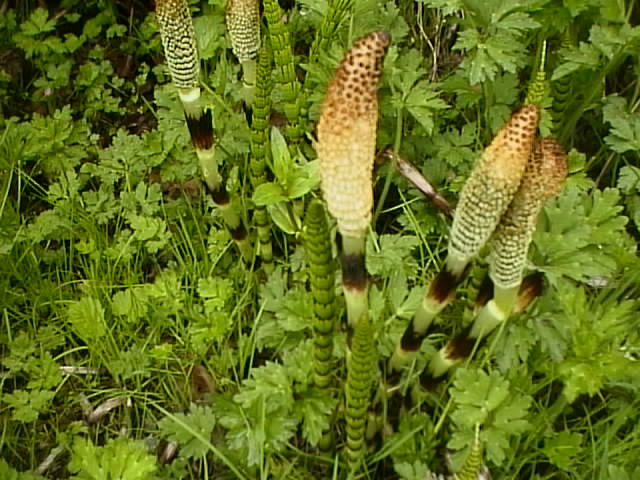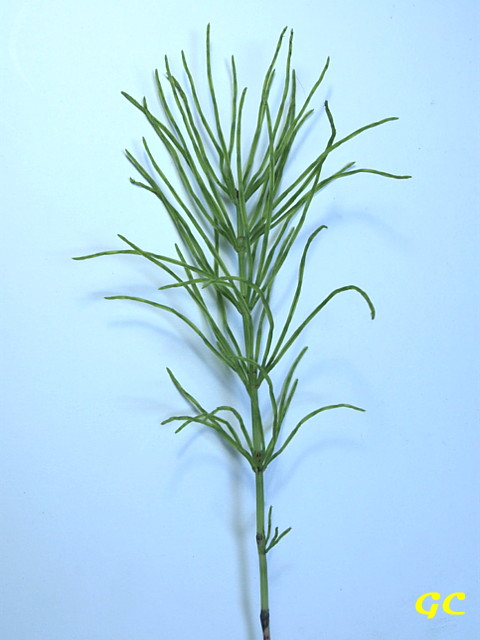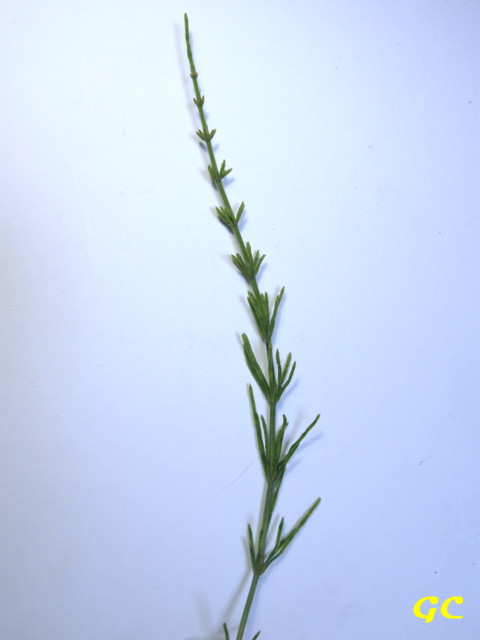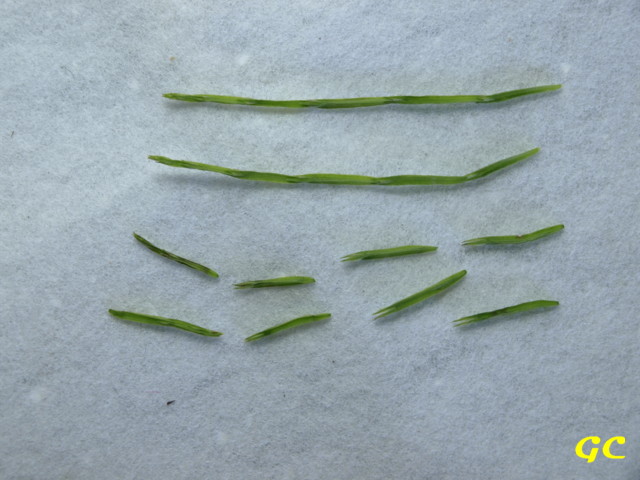Horsetail or Field Horsetail
Other names: Bottlebrush Plant, Cat's Tail, Pipeweed, Shave Grass, Scouring Rush
Scientific Name: Equisetum arvense
Family: Equisetaceae

Horsetail is an ancient plant that has existed for around thirty million years.
It is a common weed widely distributed throughout the earth, such as Canada, England and Hong Kong.
The perennial plant also grows in a variety of habitats, from boggy ground to sand dunes, but
it flourishes better on wet and poorly drained soils. This green plant has no true leaves and
is straight like an asparagus. There are two forms of stems -
one fertile (reproductive) and one sterile (vegetative); both are hollow and jointed.
The reproductive stems are slender with no branches and often bear a whitish to brown cone at the tip.
Green shoots of about 10 cm (4 inches) pop up with brown cones in early spring,
and then shed reproductive spores in early May. The spores are necessarily the only reproductive means
of the asexual weed. It can equally reproduce itself by propagating on its deep, intense root system.
Fertile Stem (www.thegardenhelper.com)


Vegetative Forms of Horsetail

The sterile stems have whorls of needle-like branches or "leaves" at regular intervals, and the branches have a 4-angled triangular cross section. The branch is characterized of breakable cells that can be easily joined together by hand. The surface of the branches has a rough, gritty texture because of the accumulation of microscopic silica grains.
Jointed cells of "needle leaves"
Gardening & Farming
Horsetail is considered a noxious weed. In gardens and fields, the extensive deep roots are difficult
to eradicate and the spores can survive in the winter.
Horsetail is resistant to most weed killers and the continual removal of this weed is diligently required,
although some advise to crown off this weed by enriching the soil with fertilizer or compost.
The weed is harmful to livestock (particular to young horses and sheep) as a fresh plant in the field and a dried plant
in hay. Generally, the animals avoid eating fresh horsetails but eat them when no grass available.
A minor amount of horsetails does not seem to kill the animals, but the weed can cause weakness and
paralysis when the animals eat them for a prolonged period.
The hay mixed with horsetail is more harmful; it is considered poisonous with more than 20 percent of the weed.
Horsetail contains a toxic substance as thiaminase and an unknown toxin, which deplete Vitamin B in the body.
Therefore, it can be fatal when ingested in sufficient quantities. The illness is called "equistosis"
and there is no known anti-dote.
Symptoms of Poisoning (for horses)
Jaundice, loss of appetite, weakness, staggering gait, excitability, and paralysis(ref: Ontario Ministry of Agriculture, Food and Rural Affairs, www.omaf.gov.on.ca)
Beneficial Uses
(1) In construction and mining, horsetail can be used to stabilize soil slopes subject to erosion.(2) With the high level of silica grains, horsetail is known to attract metal elements such as gold. One ton of horsetails can produce about 4.5 ounces of gold.
(3) Because of the silica grits, campers use horsetail to scour metal pans and to sand wood.
(4) Horsetail can make an effective fungicidal spray for garden plants - to treat black spot on roses and rust on mint.
(5) Native Americans are known to eat the young shoots of the plants.
(6) As medicines, it can be used exteriorly to stop bleeding and treat minor burns.
(7) Generally, the plant can be considered toxic and can damage to internal organs. It has a diuretic effect and promotes the excretion of urine. Some professional herbalists use it to treat the infections of the urinary tract, kidney and bladder stones and use it as an antioxidant. Other possible herbal uses are treatments of osteoporosis and rheumatic conditions.
[Top|Middle] of Page